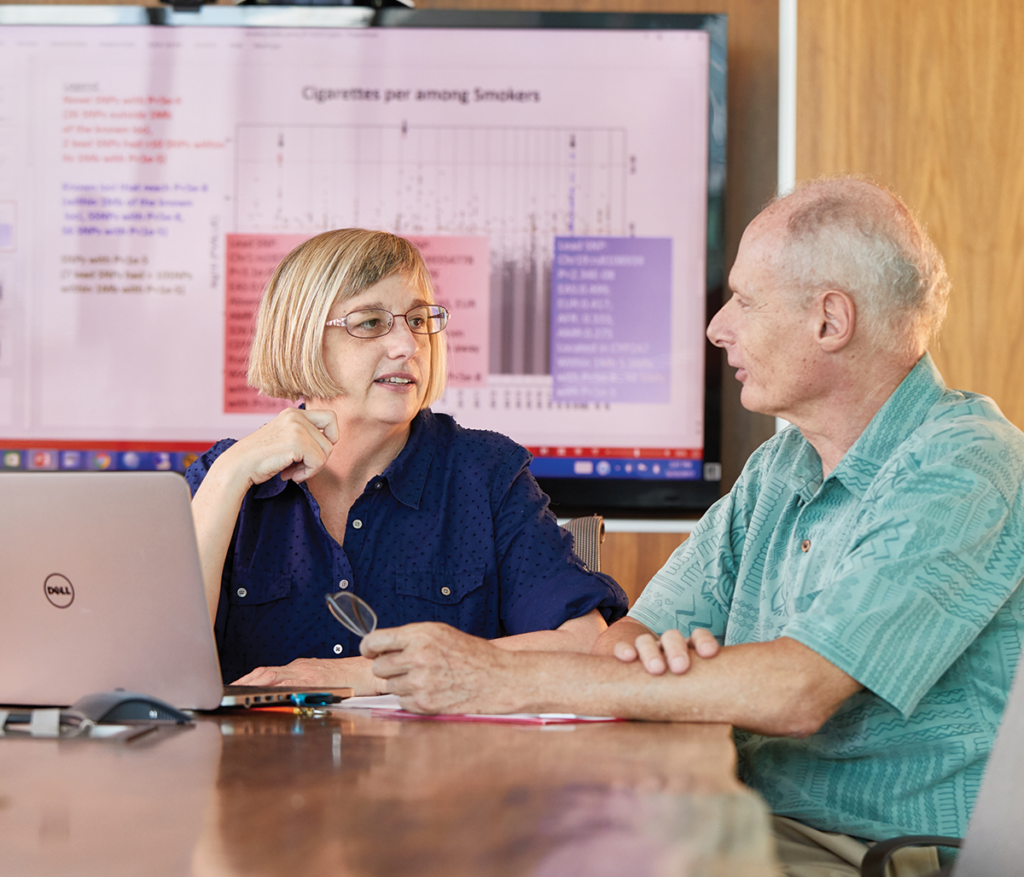24 Years of Epidemiological Research in Cancer Prevention
Each year more than 6,000 Hawai‘i residents are diagnosed with cancer, and more than 2,000 will die from the disease. These numbers are on the increase due to the growth and aging of the state’s population.
Cancer is now the second leading cause of death in Hawai‘i, and accounts for one of every five deaths statewide. The disease is also a large and growing burden on the economy with the cost of care in the United States projected to rise from $125 billion in 2010 to $158 billion in 2020—and this does not include the additional costs of the emerging drugs that are transforming cancer care today.
Although primarily known as a picture-postcard travel destination for travelers worldwide, Hawai‘i plays a key, but much less publicized role in cancer research. Because the burden of cancer varies markedly among populations, Hawai‘i offers opportunities unmatched anywhere else in the world to study ethnic/racial differences in cancer rates because of its multiethnic population, excellent cancer registration and high level of healthcare.
Seminal studies conducted in the 1980s among Japanese migrants to Hawai‘i established the predominant role of lifestyle (i.e., smoking, diet, alcohol, exercise, etc.) over genetics in causing cancer. These and other broad comparative studies among populations showed that as much as 40 percent of cancers could be prevented by lifestyle changes alone. However, identifying which specific dietary patterns or lifestyle are beneficial in lowering risk of cancer required much more detailed and long-term studies.
In 1993, the Multiethnic Cohort (MEC) study was established with a research grant from the US National Cancer Institute by Dr. Laurence N. Kolonel at the University of Hawai‘i Cancer Center (UH Cancer Center) and Dr. Brian Henderson at the University of Southern California to study diet and nutrition among 215,000 Hawai‘i and Los Angeles residents aged 45-75. More than 70 percent of the survivors are still filling out questionnaires every five years, a testament to the high level of interest that the study has received.
“This is the most ethnically diverse and one of the largest epidemiologic studies of cancer and other chronic diseases in the world,” said Dr. Loïc Le Marchand, principal investigator of the study for the past five years and lead researcher of the UH Cancer Center’s Cancer Epidemiology Program. “Its findings have been used all over the world to make recommendations to the public about nutrition and cancer.
Because a blood sample was collected for more than 75,000 participants, the study has more recently focused on the understanding of genetics in cancer and especially on the combined effect of genetics and lifestyle on cancer risk.
“Novel technologies have allowed us to identify cancer biomarkers that vary in frequency across populations and may help in predicting risk of the disease,” said Le Marchand. “This is important in order to select high-risk individuals for intense screening. We may also be able in the near future to provide more personalized lifestyle recommendations to lower cancer risk based on one’s unique risk profile.”
Using the MEC last year, Le Marchand and this team discovered new genetic markers associated with a fast rate of nicotine metabolism, which can potentially lead smokers to increase their smoking, leading to an increased risk of lung cancer. In 2015, UH Cancer Center epidemiologists identified genetic variants associated with an increased risk of colorectal cancer. In all, MEC investigators have brought to UH more than $100 million in research funding and published over 500 research articles elucidating the nutritional and genetic risk factors for cancer and other chronic diseases.
“The MEC Study is an exceptional resource for University of Hawai‘i Cancer Center investigators and has led to seminal findings in the area of cancer ethnic diversity,” said Dr. Randall Holcombe, director of the UH Cancer Center. “The research has truly benefitted the people of Hawai‘i and led to a better understanding of cancer among our diverse population.”

